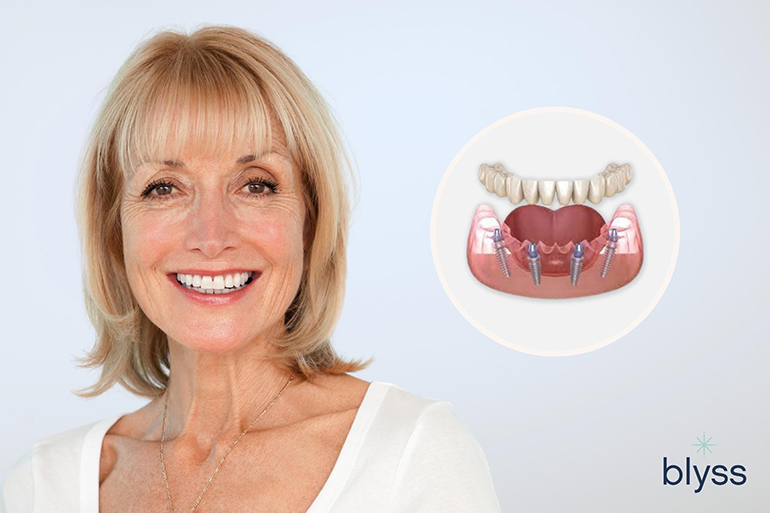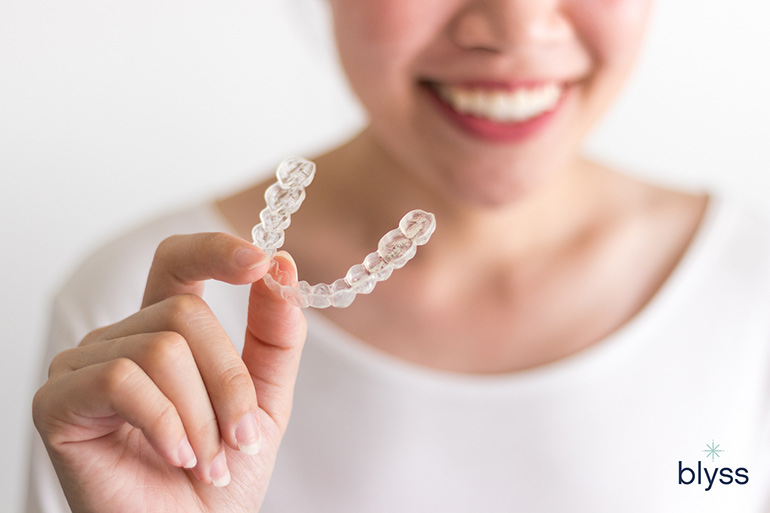Dentists and researchers are constantly improving the treatment options available to restore missing teeth. The high rate of tooth loss worldwide has demanded more efficient and natural treatment alternatives. This has led to the development of All-on-4 dental implants.
This is a popular and versatile alternative for patients whose bone condition, meaning quantity and quality, is not ideal. The treatment consists of placing a fixed bridge on top of 4 dental implants strategically placed on the front jaw.
The only difference is that the dentist places the dental implants in the back at an angle. This allows the dentist to safely place the implants even if the bone condition is not ideal. Therefore, the patient can usually undergo the treatment without requiring an extensive bone graft or a sinus lift.
Although all-on-4 dental implants are a great solution, there are several things that you should consider before getting them.
This is the list of the top things I recommend that you should consider before getting all-on-4 dental implants. Knowing this stuff can ensure that you make the right decision.
Consideration 1. Choose an Experienced Implant Dentist
Every dental procedure must be done with special care and precision to ensure the treatment’s success. Moreover, it also guarantees your safety throughout the process.
However, since all-on-4 dental implants involve surgery, you must ensure the dentist performing the procedure excels at the quality standards. Your dentist must be capable of designing the case and placing the implants with extreme precision.
Therefore, it is vital to choose an experienced implant dentist. This way, you can reduce the risk of complications or undesired situations to a minimum.
Some aspects that you should look for in an implant dentist include:
Time Invested in Implant Dentistry
You should look for a dentist who has focused and invested plenty of time and resources in dental implant procedures. It is essential to understand that implant dentistry is not a specialization. Placing a dental implant is a procedure a dentist with the required training can perform.
However, some dentists tend to focus mainly on dental implants.
Postgraduate Studies and Courses
The dentist placing the implant should have achieved a postgraduate degree. This includes both specialized courses and live implant surgical training.
Usually, you can find information about dentists on their websites and social media profiles. Or, you can contact them directly.
While researching, you should look for information regarding where they underwent their studies, the courses they have taken, and their years of expertise.
Furthermore, you can ask them directly to see some reference cases they have done in the past. Thereby, you can observe the results and success of their treatments.
High-end Technology
In order to remain at the forefront of their field, it is important for dentists not only to use high-end technology but also to update themselves with the latest techniques. This can also enhance the treatment results.
At Blyss Dental, we use the most advanced digital and 3D-guided surgical techniques to ensure the accurate placement of implants. We also minimize the pain and significantly shorten the healing time using surgical guides that are digitally planned.
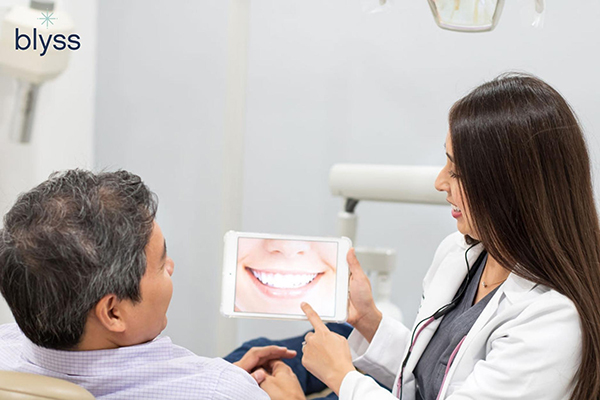
Choosing an experienced implant dentist in San Diego makes a big impact on the result of your dental implant surgery. The right dentist must meet or excel in quality standards to give you the perfect smile.
Consideration 2. Know If You’re a Candidate for All-on-4 Dental Implants
All-on-4 dental implants are an excellent alternative for a wide variety of people. However, it is still a surgical procedure with its indications, characteristics, and limitations. Therefore, not everyone is a good candidate for this treatment option.
Read to know if you qualify for standard dental implants before pursuing an All-on-4 Procedure:
8 Common Mistakes to Avoid With All-on-4 Dental Implants
Some of the aspects that can help you determine whether you are a good candidate or not include:
1. Medical History
As dentists, we need to evaluate the patient’s medical history thoroughly. This is an important phase to determine if it is safe to perform the surgery.
Patients with uncontrolled diabetes are not good candidates since the condition interferes with the healing stage. Therefore, it could lead to treatment failure.
Furthermore, patients with uncontrolled hypertension also cannot undergo dental surgery. It is risky to perform almost any surgical procedure on patients with this condition. This is due to the high risk of health complications during the surgical procedure.
Finally, smoking is also a contraindication since it also interferes with healing.
2. Number of Missing Teeth
All-on-4 intends to restore a complete dental arch. This means there will not be any natural teeth left in the dental arch.
Ideal patients probably have lost all their teeth already. Nonetheless, patients with a few remaining teeth are also good candidates. The most important thing is not to lose hope. Almost all oral health situations are fixable with patience, compromise, and hard work. It’s also important that extracting teeth is always the last resort.
Sometimes, I tend to opt to extract the remaining teeth to restore the mouth with implants or a prosthetic denture. However, this is only done in severe tooth loss cases, where just a few remaining weakened teeth are left in the mouth.
If the patient still has several or most of his teeth in the mouth and those are in good condition, then they are not good candidates for all-on-4 dental implants. In this case, you can choose other eligible treatment options, such as fixed bridges, single-unit dental implants, or partial removable prosthetic dentures.
3. Bone and Gums Health
The patient’s bone should have specific characteristics to safely withstand dental implants. All-on-4 was designed as a solution for people with inadequate bones. Nonetheless, your bone still needs to fulfill a minimum requirement.
Usually, your bone begins a resorption process after you lose a tooth. This means that it begins to shrink. If this bone loss is too severe and your maxillary bone does not possess enough volume, the dentist will not be able to place the implants safely.
Fortunately, in some cases, we can solve this issue with a bone graft.
On the other hand, both the bone and gums must be healthy. There should not be any underlying condition, such as tumor lesion, abscess, or gum disease. These conditions and other diseases can interfere with your healing. Hence, your dentist will probably treat and fix those before dental implant surgery.
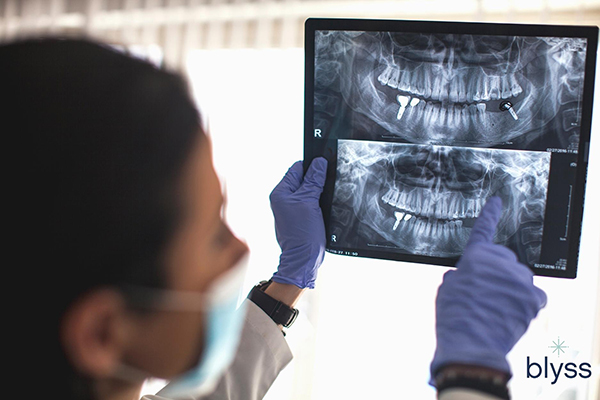
Before getting dental implants, your dentist will have to determine first if you are a good candidate for the treatment.
If you want to get dental implants in Del Mar and you are still wondering if you are a good candidate, come visit us for a thorough examination
Consideration 3. Dental Implant Brands
Case planning and the dentist’s expertise are the two most essential elements for a successful treatment. However, the quality of the materials used throughout the procedure is also crucial to achieving the best results.
The dental implants are placed permanently inside the bone. Therefore, it should have optimal properties. Moreover, although this is not a rule, getting dental implants produced by a low-quality brand could increase the risk of treatment failure.
The only way to ensure the high quality of an implant is by getting them from one of the top recognized dental implant brands, such as Nobel Biocare, Straumann, Neodent, Zimmer Biomet, Dentsply Sirona, and more.
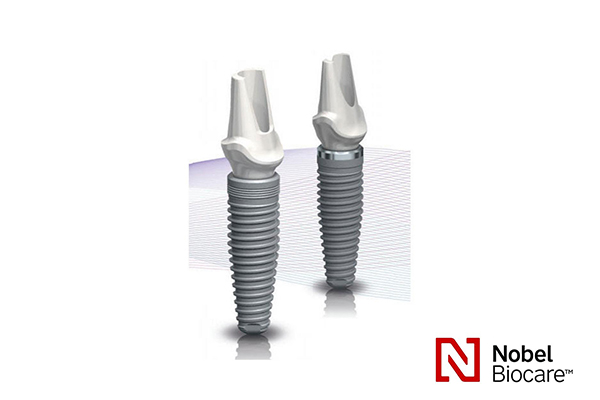
Before undergoing any dental implant procedure, opt for high-quality materials made by recognized brands to lessen the risks of treatment failure.
These brands are characterized by high-quality materials used on all their dental implants. They only use materials that are ensured to be highly biocompatible. This means that the risk of allergies or implant rejection is minimal.
Furthermore, these companies offer multiple models with different sizes, shapes, and materials. This helps dentists choose the perfect set of implants for any individual case based on its characteristics.
Also, the efficiency of the implants produced by these top brands has been proven and documented. There are hundreds of scientific studies and research published in important journals.
It is essential to know that all-on-4 dental implants were designed and patented by the company Nobel Biocare. This technique uses the angled implants designed by them.
However, I usually use Straumann implants for my patients. These implants have proven to be highly effective for a long time. Moreover, they are designed to improve osseointegration and reduce healing time.
Consideration 4. Ask About Pre-Treatment Procedures And Whether They Are Necessary
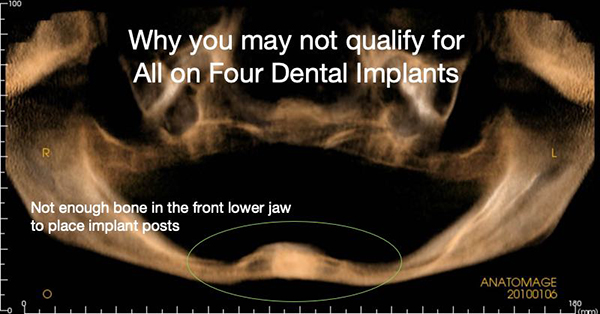
If there’s not enough bone in the jaw to support dental implants, pre-treatment procedures such as bone grafting.
Unfortunately, mouth conditions are not always ideal. On many occasions, the bone cannot withstand the implant, or there is not enough bone to place it.
However, this issue can most times be solved with a pre-treatment procedure. These specific treatments can involve additional surgeries, such as bone grafts, and tooth extractions.
Tooth Extractions
There are a few different reasons why your dentist may recommend extracting a tooth before placing an implant. One of the most common reasons is that the tooth is damaged beyond repair. This could be due to decay, injury, or disease. In cases where the tooth can’t be saved, extraction is often the best option.
Another reason your dentist may recommend tooth extraction is if there isn’t enough bone density in the jaw to support an implant. In order for an implant to be successful, there needs to be enough healthy bone to fuse with the implant. If there isn’t enough bone, extraction followed by a bone grafting procedure may be recommended.
Bone Graft
Second to tooth extraction, a bone graft is the most common pre-treatment procedure. This surgical procedure involves grafting new bone to your deficient bone. This reinforces your bone structure so the dentist can safely place the implant.
This procedure increases the treatment time. This is because it usually takes 4 months for the grafted bone to fuse with your jaw or maxillary bone. The dentist cannot place the implant until the bone graft has integrated and the site has healed completely.
Consideration 5. Research The Whole Process
As a diligent patient, you should research the whole process and understand how it works before undergoing treatment. All-on-4 dental implants are procedures involving several steps and months of treatments before achieving the final result. The treatment plan usually goes as follows:
Step 1: Initial Consultation or Pre-Surgery Assessment
Prior to beginning the All-on-4 procedure, a comprehensive examination and consultation are conducted with the patient. This includes reviewing the patient’s dental health and past medical history in detail, as well as taking x-rays, digital 3D scans, and physically examining the mouth. The purpose of these tests is to ensure that any underlying issues are identified so they can be addressed before starting the All-on-4 Procedure.
During the consultation, the dentist will also have a detailed conversation with you about your goals to ensure that all aspects are given due consideration. This is an important part of the process in order for you to be as informed as possible when making the decision to undergo surgery for your overall health and well-being.
Step 2: Patient Preparation and Pre-Treatment Procedures
After the dentist explains the procedure in detail to the patient, confirms that they are a good candidate for surgery, and gets their commitment to move ahead with treatment, the next stage of surgery can begin.
Before the start of the surgery, your dentist will take various measurements to correctly plan where to place the implants and design how the replacement teeth will look. This careful planning stage is crucial for guaranteeing a perfect fit, maximum comfort for you as our patient, and increased stability between your implants and prosthesis.
If any pre-treatment procedures are necessary, these will be completed before the actual All-on-4 procedure. This could include tooth extractions or bone grafting surgeries to ensure that the mouth is in optimal condition for implant placement.
Step 3: Implant Placement
On the day of surgery, the first step is administering anesthesia to ensure your comfort during the procedure. The All-on-4 method allows for four implants to be placed in each arch (top and bottom) of your mouth. These titanium screws serve as a stable foundation for your prosthetic teeth.
Once placed, it will take approximately 3-6 months for them to fully fuse with the bone through a process called osseointegration. During this time, you will have temporary dentures to wear over the implants until they are ready to support permanent prostheses.
Step 4: Implant Abutment Placement
After the implants have fully fused with the jawbone, your dentist will place small connectors, called abutments, onto the implant posts. These abutments serve as an attachment point for your prosthetic teeth to be securely attached to the implants.
Once these are in place, impressions will be taken of your mouth and sent off to a dental lab where your custom-made prosthesis will be created. This permanent prosthesis can either be removable or fixed in place, depending on what you and your dentist decide is best for you.
Step 5: Prosthesis Placement
Once your custom-made prosthesis has been completed by the dental lab, it will be securely attached to the abutments on your implants. Your dentist will make any necessary adjustments for ultimate comfort and function before declaring the All-on-4 procedure complete.
Related Article: Dental Implant Healing Stages: What To Expect After Getting A Dental Implant
What makes all-on-4 dental implants unique is their angled design.
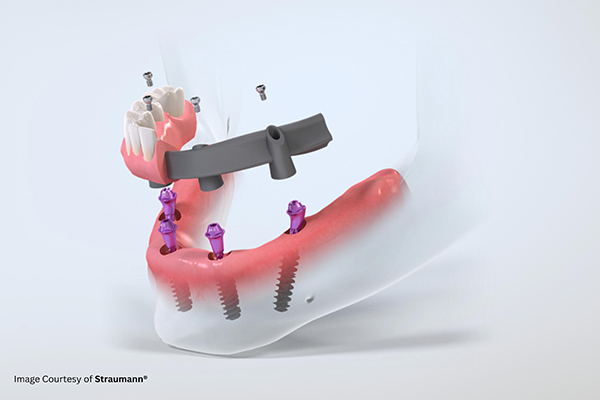
The angled design of an All-on-4 allowed by Straumann shows a more secure bond between the implant and the jawbone, providing patients with a more stable foundation for their new teeth.
Typically, dental implants are placed at a vertical angle, directly to the bone. However, in all-on-4, only the two implants in the front are vertical. The other two specialized implants in the back lay at an angle, allowing the professional to safely place the implants when bone conditions are not ideal. In traditional implant conditions, on the contrary, a bone graft would be necessary.
Therefore, the dentist can safely place a fixed bridge on top of only 4 dental implants even when conditions are not the best.
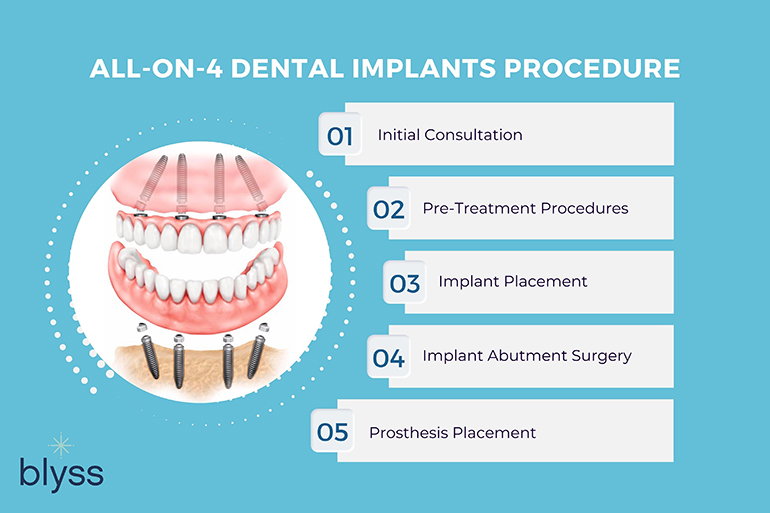
Dental implants are becoming an increasingly popular treatment for missing teeth, but many patients are still unsure about how they work.
Consideration 6. Navigate the Cost of All-on-4 Dental Implants
All-on-4 dental implants are an outstanding solution. Nonetheless, high-quality solutions come at a price, and this alternative is not cheap. In San Diego, California, All-on-4 costs around $18,000 – $35,000 per arch.
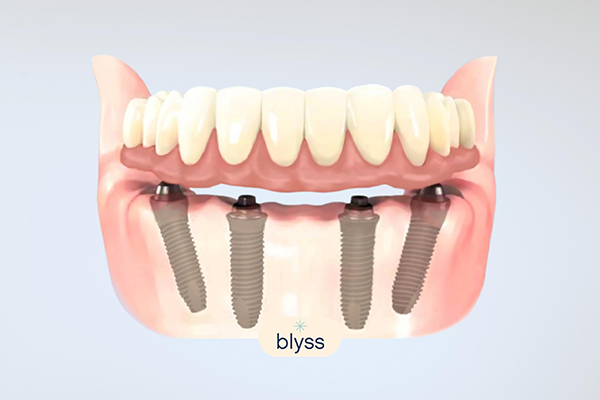
All-on-4 implants are typically more expensive than standard dental implants because of the materials used, and the doctor’s expertise, and they require more surgeries than a regular dental implant procedure.
Fortunately, there are a few ways to save money if you get your dental implants in San Diego.
The first and most common one is to check with your insurance. Most insurance does not cover All-on-4 procedures. But they may cover preparatory procedures such as diagnostics (CBCT) and extractions.
Lastly, you can negotiate the price with your dentist or determine a payment plan beneficial for both parties.
Financing
Blyss Dental will work with you to find the best financing options for your dental implants. We work with not just one or two, but 12 industry-leading financing companies and counting so you can get value-for-money and high-quality dental solutions in San Diego. Contact us to pre-qualify for our financing options.
Consideration 7. Are All-on-4 Dental Implants Really What You Need?
Although all-on-4 is an exceptional alternative, it is not always the best one or what you need.
I can evaluate your case and give you a series of viable treatment options. Moreover, I can also help you determine which one would be the best for you. These alternatives include
Regular Prosthetic Dentures
The first treatment alternative to all-on-4 implants is a regular prosthetic denture. Still, you can get this type of prosthesis if you are not willing to undergo surgery.
A regular prosthetic denture is more affordable and can be freely removed. However, it is not as stable as an all-on-4 fixed bridge since it relies on suction to remain in place. Therefore, it could accidentally fall from your mouth while eating or speaking.
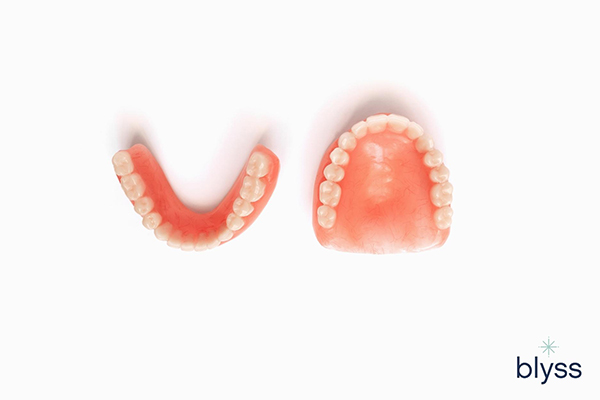
This is an image of a set of prostheses. All-on-4 dental implants allow you to get better teeth that are permanently attached to your jawbone. You can say goodbye to denture glue.
Overdentures
Overdentures, also called denture implants, is the first option for full mouth reconstruction that uses tooth implants. They snap on and off of the teeth implants which gives you the ability to remove them whenever you need or want to clean them. However, they are still very secure. You would have to intentionally damage your snap-in dentures pretty badly for the false teeth to come loose and snap off on their own.
Although less expensive, overdentures are no less effective than their more costly counterparts. If you find conventional dentures uncomfortable, consider investing in overdentures instead. Not only are they more comfortable to wear, but they are less bulky in the mouth and you won’t have to worry about them dislodging when you laugh. The best part? You can eat just about anything with them! Your favorite steak? Corn on the cob? Yes and yes!
Fixed Hybrid Bridge
The most common type of permanent implant teeth replacement is the Fixed Hybrid Bridge, which uses 4o 8 implants per jaw to support the placed fixed teeth.
The Fixed Hybrid Bridge is the top choice for dentists because it is strong and stable. By being able to identify the best location of the implants in your mouth, it can balance your bite forces. This also allows the dentist to install a full set of replacement teeth (12 – 14 teeth per jaw), as opposed to only 10 with All-on-4 dental implants.
The term “Hybrid” refers to the combination of different materials used to create the replacement teeth. The false teeth or prosthesis is a combination of 3 dental materials – a metal frame, fake gums, and false teeth either made from resin or composite teeth.
The combination of these three materials makes full teeth replacement strong, while still being flexible enough to avoid breaking.
Zirconia Fixed Bridge
Zirconia is the primary material used in this fixed teeth replacement, and it is also what makes this option so great. It is the strongest material in dentistry today due to its “diamond-like” properties.
Fixed Zirconia Bridges are the most biocompatible option for full teeth replacements. They don’t have micropores, which you would find on acrylic bridges. If you want your implant teeth replacement to last longer, choose a Fixed Zirconia Bridge.
The only downside of this option is its cost. It is the Rolls Royce of full teeth replacement: Fixed Zirconia Bridge. No doubt, at an average cost of $55,000 to $65,000 in the US or Canada, this is the most expensive implant teeth replacement procedure.
Consideration 8. Teeth in a Day
Teeth in a day is a treatment option available with all-on-4. As its name suggests, it consists of placing a fixed bridge on top of the implants on the same day of your surgery.
Usually, a regular prosthetic denture is placed over the gums after the implant surgery. This prosthesis behaves as a provisional restoration that allows you to eat and speak normally while the implants heal.
However, we use a fixed temporary bridge instead of the regular prosthetic denture with teeth in a day. Therefore, you can walk out of the office with a fixed temporary bridge right after the surgery.
Nonetheless, it is essential to understand that this fixed bridge is also provisional. Therefore, it must be replaced with a permanent fixed bridge after the implants heal.
Unfortunately, not everyone is a good candidate for this procedure. Since the bone and implant still need to heal correctly to avoid issues, only patients with ideal conditions are good candidates.
Therefore, you must meet the following standards.

If you meet the following standards, you may be a good candidate for all-on-4 dental implants.
Only a dentist can determine if a patient is a good candidate for teeth in a day upon a thorough examination.
The Takeaway
All-on-4 dental implants are one of the best ways to restore a complete dental arch. This technique involves placing a fixed bridge on top of 4 dental implants. However, the two implants in the back are angled to avoid performing a bone graft.
It is vital to consider a few aspects before getting these implants. Since it is a surgical procedure, you should always look for an experienced dentist to perform the treatment. Furthermore, you should ask your dentist if a pre-treatment procedure will be necessary.
Also, it is essential to consider all your options. All-on-4 is not always the best alternative, and patients are not always good candidates for it.
Nonetheless, if you decide to get them, and your overall health and oral conditions are ideal, you might be a good candidate for teeth in a day. This way, you could get a provisory fixed bridge right after the implant placement.
If you want to ensure the success of your dental implants in San Diego, we can help you at Blyss Dental. Contact us to learn more about all-on-4 dental implants and how to achieve a flawless smile.
9 Sources Cited From
- Agar, J. R. (2015, June 13). Dental implants. Position Statement: Dental Implants | American College of Prosthodontists. Retrieved August 21, 2022, from https://www.prosthodontics.org/
about-acp/ position-statement-dental-implants/ #:~:text=Placement%20 of%20dental%20 implants%20is,with%20 radiographic%20and%20surgical%20 components - Colgate. (22AD, March 11). Sinus lift surgery – what you need to know: Colgate®. Sinus Lift Surgery – What You Need To Know | Colgate®. Retrieved August 21, 2022, from https://www.colgate.com/en-us/oral-health/implants/sinus-lift#
- Dhinakarsamy, V., & Jayesh, R. S. (2015). Osseointegration. Journal of Pharmacy and Bioallied Sciences, 7(5), 228. https://doi.org/10.4103/0975-7406.155917
- Frisbee, E. (2021, July 30). Dental implants: Surgery, advantages, risks, and insurance questions. WebMD. Retrieved August 21, 2022, from https://www.webmd.com/oral-health/guide/dental-implants
- Nobel Biocare. (n.d.). All-on-4® treatment concept. Nobel Biocare. Retrieved August 24, 2022, from https://www.nobelbiocare.com/en-int/all-on-4-treatment-concept
- Robinson, K. M. (2022, April 26). Are dental implants right for me? WebMD. Retrieved August 21, 2022, from https://www.webmd.com/
oral-health/ dental-implants-right-me - Roland, J. (2021, January 5). What you need to know about a dental bone graft. Healthline. Retrieved August 21, 2022, from https://www.healthline.com/health/
dental-bone-graft - Tallarico, M., Vaccarella, A., Marzi, G. C., Alviani, A., & Campana, V. (2011, September). A prospective case-control clinical trial comparing 1- and 2-stage nobel biocare tiunite implants: Resonance frequency analysis assessed by Osstell mentor during integration. Quintessence international (Berlin, Germany: 1985). Retrieved August 21, 2022, from https://pubmed.ncbi.nlm.nih.gov/
21842003/ - Whelan, C. (2021, May 3). Dental implant procedure: What to know. Healthline. Retrieved August 21, 2022, from https://www.healthline.com/
health/dental-and-oral-health /dental-implant-procedure
